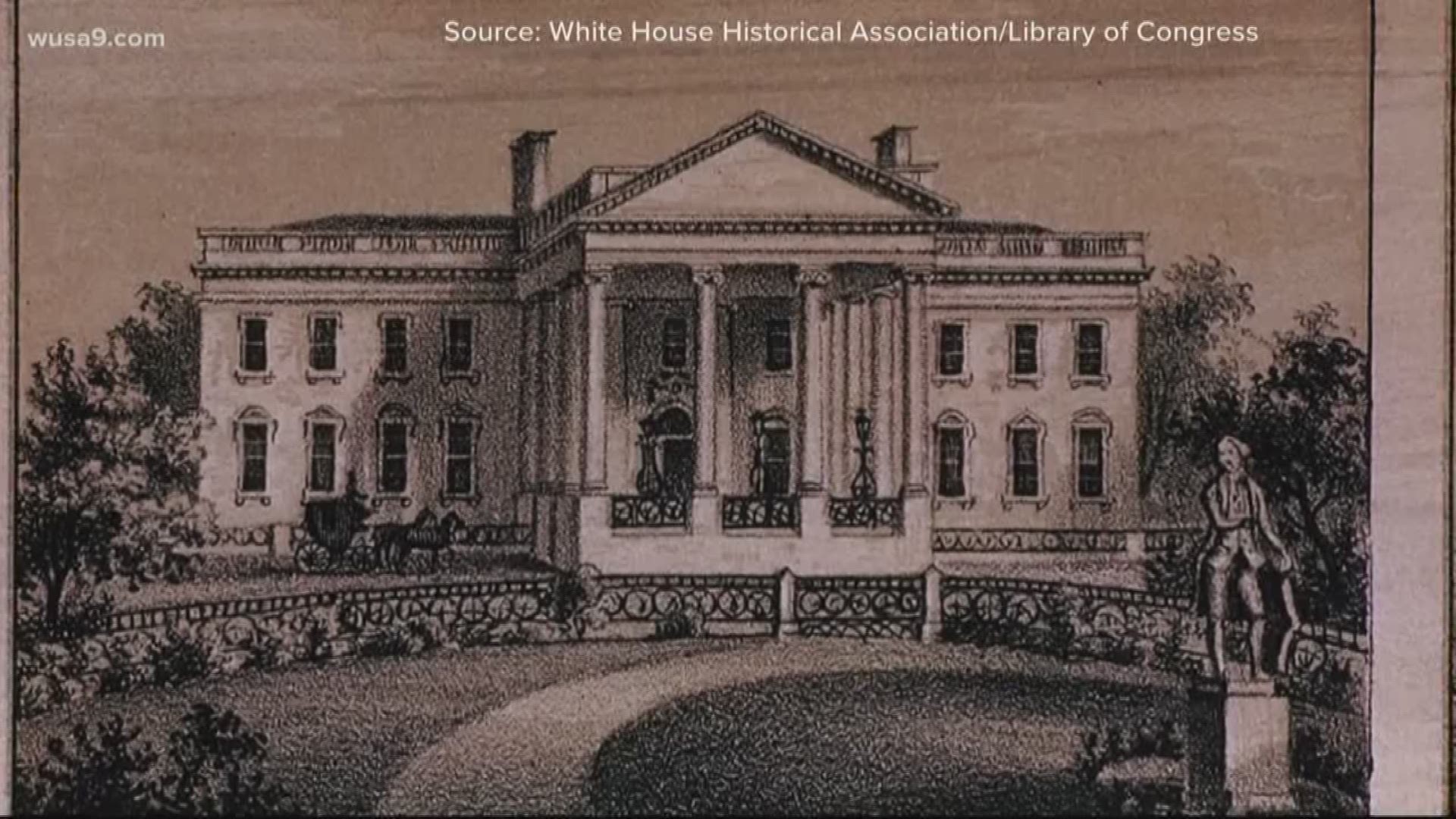Table Of Content

One of the most significant elements of the museum is the “Door of No Return,” which is described as the area where enslaved people were boarded onto ships. NASHVILLE, Tenn. (AP) — Tennessee’s Republican-dominant House on Wednesday spiked legislation that would have banned local governments from paying to either study or dispense money for reparations for slavery. NASHVILLE, Tenn. -- Tennessee’s Republican-dominant House on Wednesday spiked legislation that would have banned local governments from paying to either study or dispense money for reparations for slavery. Built in the eighteenth century, on the Senegalese island of Gorée, this was one of the many spots through which people from all over Africa were taken and sent to the New World to work as slaves. The actual house dates back to 1776, but the island has a long history shaped by colonization and slave trading.
The streets of the island
It is my hope that awareness of these types of atrocities will help forge a more peaceful future for all of us. The small building was divided into rooms for men, women, underweight men, and children. These rooms were packed with Africans, sometimes so tightly full that they were unable to lay or even to sit down comfortably. The slave trade was the worst of humanity, but if’s very important to learn about. It’s a poignant site where you can learn about the history and impact of the slave trade. Built in the late 18th century, it is the one remaining house where slaves were imprisoned in.
The House of Slaves: Island of Gorée
Elder women who often served as wet nurses for white infants were required to defer to them as adults (Jacobs 1861). In addition, house servants served as informants for the master and overseer, concerning the possibility of revolt by field hands. By the same token, house servants often performed the role of spy for field hands planning a rebellion. Being in close proximity to the master, they were privy to enormous amounts of information concerning the daily habits, hopes, fears, strengths, and weaknesses of the plantation system and its managers. This information would be vital to field hands who were planning an escape or a successful revolt. Following its construction in 1776, the House of Slaves became a holding center for enslaved African people to be exported.
People, Locations, Episodes
The House was owned by an Afro-French woman (Anne Pépin), who owned several ships and participated in the slave trade.[3] Conditions in the building were harrowing, with many of the imprisoned perishing before they reached the ships. The house of slaves in Gorée Island, Dakar, Senegal was constructed by the Dutch in 1776. It was the largest slave trading center during four centuries from the 15th to the 19th century. Slaves were kept for domestic use; however, the main activity was to sell them overseas, it is estimated that 26,000 slaves passed through The Door of No Return located which is located at the back of the slaves’ house. The house of slaves in Gorée Island still serves as a remainder of human exploitation, also as a sanctuary for reconciliation.
Now, University of Virginia architectural history professor Louis Nelson is part of an international team working to restore Pépin’s home and share its lessons with generations of Senegalese schoolchildren and tens of thousands of international visitors. The voyage of enslaved people from the west coast of Africa to the Americas was known as the Middle Passage. Enslaved people endured traumatic conditions on slavers’ ships, including cramped quarters, disease, meager rations, and physical and sexual assault. A Florida Republican lawmaker proposed a constitutional amendment this year that would have banned state or local governments from paying reparations, but the measure didn’t pass.
Last year, he led a field research class that had students crawling through the attics and basements of the Academical Village to discover and interpret evidence of slaves’ lives in the 19th century. Fellow faculty member Andrew Johnston, director of UVA’s Historic Preservation program, then led students in digitizing and sharing their findings. “Today, millions of men, women and children say ‘no’ to extreme poverty and shame because yesterday people, treated as slaves by the powerful, in their hearts asserted that they were human beings. Countless people have died over three centuries so that this should never be forgotten”.

A Brief History of Scent With Saskia Wilson-Brown
White House condemns Fox News over ‘dangerous and extreme’ Holocaust comments from top host - CNN
White House condemns Fox News over ‘dangerous and extreme’ Holocaust comments from top host.
Posted: Tue, 25 Jul 2023 07:00:00 GMT [source]
And they were joined there by descendants of those prominent Americans who had once enslaved their ancestors. In Haiti, before leading the Haitian revolution, Toussaint Louverture had been a house slave. However, the proportion of house-born slaves seems to have been relatively large in Ptolemaic Egypt and in manumission inscriptions at Delphi.[3] Sometimes, the cause of this was natural; mines, for instance, were exclusively a male domain. The study of slavery in Ancient Greece remains a complex subject, in part because of the many different levels of servility, from traditional chattel slavery through various forms of serfdom, such as Helots, Penestai, and several other classes of a non-citizen. As part of The Goree Island UNESCO world heritage site, the Maison des Esclaves, and its tour was a sobering reminder of history. I was pleased to hear that our visit followed Nelson Mandela, Pope John Paul 2, and several U.S.
“Magical” is how Tamara Moore, 72, of Arlington, a great-granddaughter of James Parks, described the dinner held the night before with descendants from all of the families. The reunion, long in the planning, was an opportunity to “touch people and inspire people and celebrate our shared past together,” said Hammond, who is a family historian and occasionally gives tours of the property. Colorful painted businesses and homes greet you as you disembark the ferry terminal onshore.
One of King Charles' relatives pushes for U.K. families that profited from slavery to make amends
The museum features numerous objects like chains, cages, and manacles to show the brutality so many people endured. And in the ornate halls of Harewood House, the earl has started adding to his impressive art collection, commissioning new portraits of black British community leaders to hang beside his ancestors. The official visit to Jamaica by William and his wife Katherine, Princess of Wales, drew demonstrations by people demanding not only an apology, but reparations. The trip was marred not only by the protests, but by images of the royal couple greeting well-wishers through a chain-link fence, which critics said looked like a throwback to the days of colonialism.
The team of African and American scholars is working to expand the museum under the direction of Sites of Conscience, an organization dedicated to preserving physical sites as reminders of past atrocities. As a result of Nelson’s partnership, UVA is one of the first universities to become a member organization under the direction of the International Coalition of Sites of Conscience, as it grapples with its own history as a site of slavery. Historians are yet to settle the numbers, but it has been argued by many that the site was a minor location in the slave trade, and some have even questioned whether it was a part of it at all. Regardless of the actual numbers, most agree that what matters is the island’s symbolism, and the House of Slaves is best considered a memorial as opposed to a historic site.
The island stopped being used to hold slaves in around 1848 when France abolished its slave trade. West African men, women and children would usually be caught inside and sent to Gorée Island, where they would be imprisoned until a boat arrived. This chilling history is echoed in the House of Slaves; there used to be multiple houses around the island, but this is the only one that remains a relic of its past. During the years of the Trans Atlantic slave trade, from the 15th to 19th century, Gorée Island was used to hold captive slaves before they were transported to North America. An evocative structure complete with iron shackles and dingy cells where the slaves were said to have been crushed together in horrifying darkness, awaiting their inescapable fate.
As the ceremony drew to a close, Hammond asked the descendants and guests to form a circle on the lawn set between two cabins that once served as living quarters for enslaved people. They held hands and sang along as Arlington’s Mt. Zion Baptist Church led into “Lift Every Voice and Sing,” the anthem that has long been the galvanizing song of America’s Black civil rights movements. One hundred and sixty years after the last men, women and children enslaved on Robert E. Lee’s plantation were set free, their families returned from across the country to reunite with each other and their history. Toussaint is thought to have been born on the plantation of Bréda at Haut de Cap in Saint-Domingue, owned by the Comte de Noé and later managed by Bayon de Libertat.[7] Tradition says that he was a driver and horse trainer on the plantation.
Designated by the United Nations Educational, Scientific Cultural Organization (UNESCO) to be a World Heritage Site, Goree Island in the 21st century retains and preserves all the traces of its terrible past. This was where people would take their last step off of African soil before joining the boats to take them to the Americas. Virtually nobody ever returned back to Africa, so it was the last point where enslaved people would step off the continent.

No comments:
Post a Comment